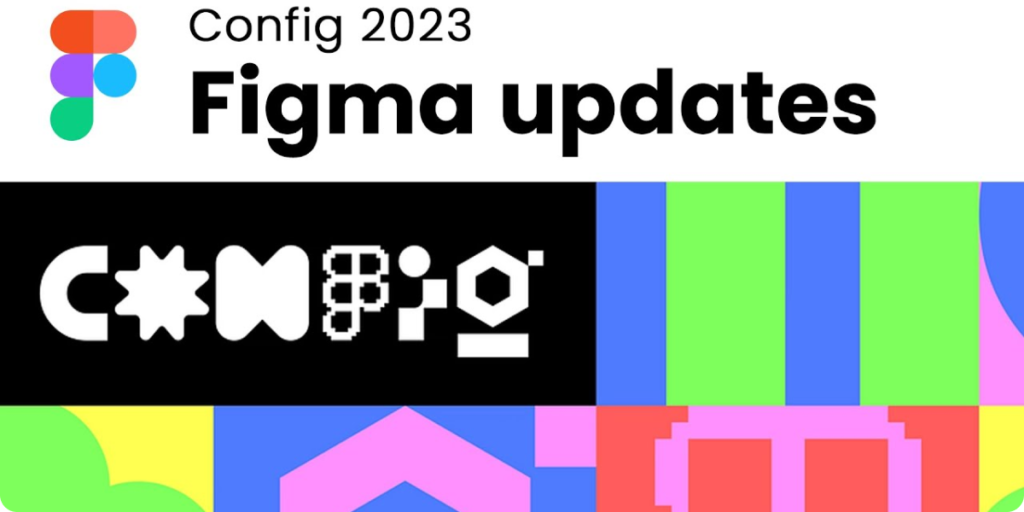Calling all the design superheroes! Figma, the beloved collaborative design tool, has swooped in with a plethora of exciting updates fresh from Config 2023. In this blog, we’ll dive into 15 Figma updates that will supercharge your design workflow. From new features to improved functionality, we’ll explore each update in detail, share key takeaways and learnings, discuss expectations, weigh the pros and cons, and provide distinct tips on how to make the most of these updates. So, put on your capes and let’s embark on this design adventure!

Photo Credits : See here
1. Component Variants
Figma now offers component variants, allowing you to create multiple variations of a component within a single file. This update empowers designers to create dynamic and flexible components without cluttering their assets. The key takeaway is that it streamlines the design process, providing better control and consistency while saving time and effort.
2. Auto Layout Enhancements
Auto Layout gets a boost with new features like Auto Layout padding, independent resizing, and constraints. These enhancements enable designers to create responsive and adaptive designs with ease. The learning here is to embrace the power of Auto Layout for efficient and flexible design systems.
3. Interactive Components
Interactive Components bring life to your designs by enabling you to create interactive elements, such as hover effects, transitions, and micro-interactions. With this update, you can build engaging and interactive prototypes right within Figma, eliminating the need for external tools. The key takeaway is to leverage Interactive Components to create immersive user experiences and validate interactions early in the design process.
4. FigJam Templates
FigJam, Figma’s collaborative whiteboarding space, now offers pre-designed templates. These templates provide a head start for brainstorming sessions, user journey mapping, and collaborative ideation. The learning here is to explore the ready-to-use templates to foster creativity and collaboration with your team.
5. Plugin Browser Revamp
Figma’s Plugin Browser receives a makeover, making it easier to discover, install, and manage plugins. This update enhances the productivity and efficiency of your design workflow by providing seamless access to a wide range of plugins. The pro tip is to regularly explore the Plugin Browser for new and innovative plugins that can supercharge your design process.
6. Prototyping Improvements
Figma’s prototyping capabilities receive a boost with enhancements like smart animate layers, scroll interactions, and overlays. These improvements allow you to create more realistic and interactive prototypes, simulating user flows and behaviors. The takeaway is to harness the power of these prototyping features to create compelling and user-friendly experiences.
7. Vector Networks
Figma introduces Vector Networks, a revolutionary way to work with vector paths. This update brings powerful editing capabilities, simplifies complex shapes, and enables precise control over anchor points. The learning here is to experiment with Vector Networks to unlock new possibilities in vector editing and shape manipulation.
8. Design Tokens
Design Tokens in Figma enable teams to create and manage a centralized library of design variables such as colors, typography, and spacing. This update promotes design consistency, scalability, and collaboration across projects. The key takeaway is to embrace Design Tokens to maintain a unified design language and streamline design system management.
9. Grid Styles
Grid Styles empower designers to create and manage grid systems within Figma. With this update, you can define grid layouts, customize grid lines, and apply consistent grids across your designs. The learning here is to utilize Grid Styles to achieve visual harmony and alignment in your designs.
10. Content Variants
Content Variants allow you to create dynamic content variations within a component. With this update, you can easily swap text, images, and other content elements to explore different design options. The pro tip is to leverage Content Variants for efficient A/B testing and rapid iteration.
11. Advanced Stroke Controls
Figma introduces Advanced Stroke Controls, giving designers more flexibility in defining stroke properties. With this update, you can control stroke alignment, dashed strokes, and stroke text with precision. The takeaway is to master Advanced Stroke Controls to refine and customize the appearance of your design elements.
12. Developer Handoff Enhancements
Figma enhances its developer handoff capabilities with features like copy CSS properties, copy code snippets, and improved design specifications. These improvements facilitate seamless collaboration between designers and developers, ensuring accurate implementation of designs. The learning here is to leverage the enhanced developer handoff features to bridge the gap between design and development seamlessly.
13. Dark Mode
Figma now offers Dark Mode, allowing you to switch between light and dark interfaces. This update provides a visually appealing alternative and promotes design accessibility. The pro tip is to toggle between light and dark modes to evaluate your designs under different lighting conditions.
14. Mobile Mirror Updates
Figma’s Mobile Mirror feature receives updates, improving the real-time preview and feedback experience on mobile devices. This enhancement enables designers to gather feedback and iterate on designs more effectively. The takeaway is to leverage Mobile Mirror to gather insights and validate your designs on various mobile platforms.
15. Design Organization
Figma introduces design organization features like Spaces and Projects, allowing designers to organize their files and collaborate more efficiently. This update enhances file management and team collaboration, promoting a streamlined design workflow. The key takeaway is to embrace the organizational features to maintain order and structure in your design projects.
You can check all that’s new here as well. Check the resource here.
The updates from Config 2023 have brought exciting new possibilities for designers. Some key takeaways and learnings include:
- Figma’s commitment to empowering collaboration and remote work through enhanced real-time collaboration features.
- The focus on design system management and analytics to improve efficiency and maintain consistency.
- The emphasis on inclusive design with accessibility features and color contrast checking.
- The continued investment in plugins and APIs to enable customization and extend Figma’s capabilities.
To make the most of the updates, follow these steps:
Stay Updated
Keep an eye on Figma’s official announcements and documentation to stay informed about new features and updates.
Experiment and Explore
Take the time to explore each update and experiment with its functionalities. Play around, test different scenarios, and embrace a spirit of curiosity and creativity.
Share Knowledge
Share your learnings and experiences with colleagues and the Figma community. Collaborate, learn from others, and contribute to the collective growth of the design community.
Looking ahead, we can expect Figma to continue pushing the boundaries of design collaboration, introducing more integrations, enhancing prototyping capabilities, and listening to user feedback to refine and improve the tool further.
So, dive into Figma’s latest features, explore their possibilities, and let your creativity soar to new heights! Remember, the world needs your design superheroes now more than ever.

Leave a Reply